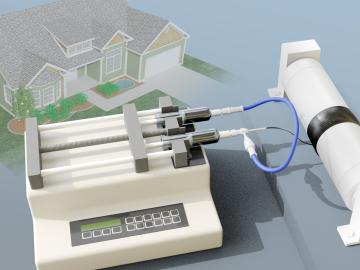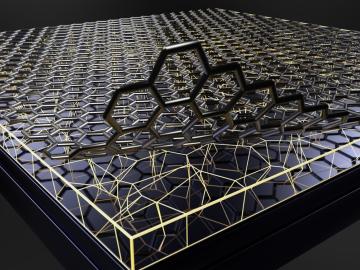
Filter News
Area of Research
News Type
Date
News Topics
- 3-D Printing/Advanced Manufacturing (3)
- Artificial Intelligence (3)
- Big Data (4)
- Bioenergy (1)
- Biology (3)
- Buildings (4)
- Chemical Sciences (5)
- Clean Water (3)
- Composites (2)
- Computer Science (3)
- Critical Materials (1)
- Emergency (1)
- Energy Storage (4)
- Environment (8)
- Fossil Energy (1)
- Grid (1)
- High-Performance Computing (3)
- ITER (1)
- Machine Learning (5)
- Materials (3)
- Materials Science (3)
- Mathematics (2)
- Neutron Science (1)
- Nuclear Energy (1)
- Polymers (1)
- Simulation (4)
- Summit (1)
- Transportation (3)
Media Contacts

ORNL researchers have developed a novel way to encapsulate salt hydrate phase-change materials within polymer fibers through a coaxial pulling process. The discovery could lead to the widespread use of the low-carbon materials as a source of insulation for a building’s envelope.

Scientists at the Department of Energy’s Oak Ridge National Laboratory are using a new modeling framework in conjunction with data collected from marshes in the Mississippi Delta to improve predictions of climate-warming methane and nitrous oxide.

Researchers demonstrated that stainless steel and other metal alloys coated with hexagonal boron nitride, or hBN, exhibit non-stick or low-friction qualities along with improved long-term protection against harsh corrosion and high-temperature.

Electric vehicles can drive longer distances if their lithium-ion batteries deliver more energy in a lighter package. A prime weight-loss candidate is the current collector, a component that often adds 10% to the weight of a battery cell without contributing energy.








